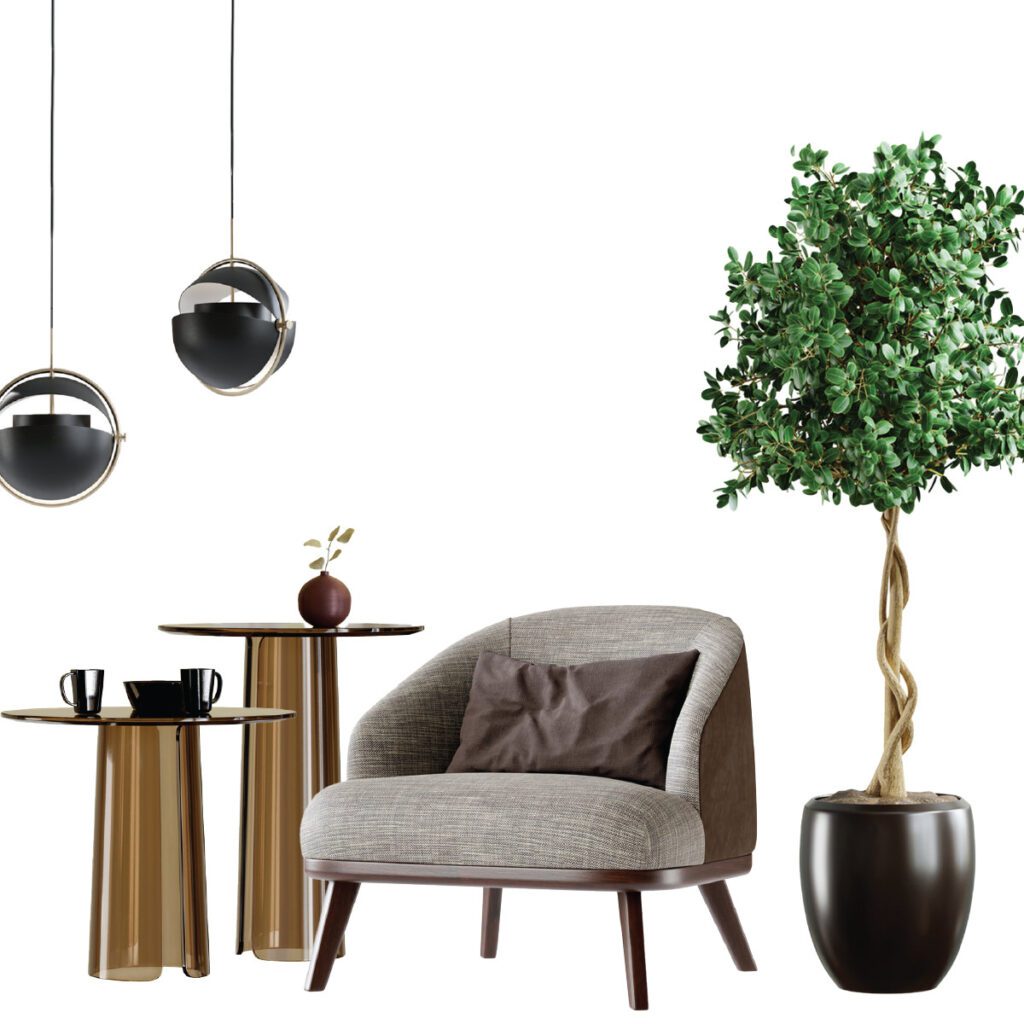Exploring the Ancient Art of Home Design
Feng shui, meaning “the way of wind and water,” is a Taoist philosophy for arranging objects and buildings to achieve harmony in an environment. There are traditional and Western schools of feng shui with varying practices, but whatever approach you choose assures a design process imbued with mindfulness. Thankfully, this art of design doesn’t require expensive furniture or massive square footage. In fact, those with rental properties, smaller accommodations, and awkward floor plans can especially benefit from feng shui-inspired design to make the most out of spatial and financial limitations.
Find Your Flow
Feng shui is rooted in the idea of how energy flows throughout the home. You’ll already have a grasp on this if you feel comfort when entering a cozy living room or dread when entering a cluttered office space. It may be helpful to walk through your home as if seeing it through the eyes of a guest. What immediately draws your eye when you enter a room? As you pass through the house, how do you differentiate between the spheres of work, personal care, dining, and rest? Asking these questions will help you understand what elements in your home might need to be shifted for more efficiency and fluidity.
Furnish With Care
Furnishings play a major role in adjusting the atmosphere of a room. A well-placed seating vignette can be inviting, while a bulky armoire might overpower a narrow hallway.


Structures that disrupt flow are generally frowned upon, such as protruding corners and entryway staircases. When these elements are unavoidable, you can add houseplants, mirrors, wall hangings, or curtains to soften any unsightly edges. It may take some creativity to work within a limited space, but small details can make a big difference. For instance, consider a soft ottoman or a circular coffee table instead of a rectangular one to prevent tripping over tight corners.
Perfecting Placement
While feng shui practitioners do advise against clutter, this philosophy doesn’t require minimalistic décor. Think instead about the purpose objects serve in your life and how their placement highlights this purpose. This is an opportunity to let your personality shine through the way you direct attention to given spots in the room. A shelf can display neat stacks of books alongside mementos and asymmetrical shapes. Or, functional features can highlight simplicity, like textured rugs, statement lighting, or metallic accents against earth-toned furnishings. If you’d like the living room to be used for visiting and conversation, be cautious of placing a TV in a central spot; family photos or an art gallery wall might make a more appropriate focal point.
A Balancing Act
Once you’ve settled on a layout for your room, it’s time to curate the mood by incorporating décor and textures. Feng shui is guided by the philosophy of yin and yang: opposite yet complementary elements. A combination of shapes can invite balance, such as round mirrors and rectangular photo frames. Colors also play a major role here, whether it be wall paint, furnishings, light fixtures, art accents, rugs, or blankets. Feng shui color theory is based on how colors manifest in nature, so blues are often associated with water, yellows and browns with earth, and reds with fire and energy. You can mix and match with this color theory to promote relaxation, productivity, or passion in each sphere of the home.
Natural Materials
Wood – Vitality
- Bamboo
- Wicker
- Houseplants
- Green or blue décor
Metal – Precision
- Vases and frames
- Fixtures and handles
- Chimes
- Gray or white accents
Water – Flexibility
- Fountains
- Glass and mirrors
- Artwork depicting water
- Black or dark blue décor
Fire – Passion
- Candles
- Light fixtures
- Fireplaces
- Red or purple accents
Earth – Stability
- Clay or terra cotta pots
- Salt lamps
- Stones or crystals
- Yellow or brown décor

